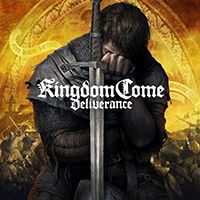
Citizen Sleeper 2: Starward Vector is the second installment in the Citizen Sleeper series and it sets out to build out more on the world that its predecessor created. And with talk about this installment being the last in the series, it has big shoes to fill: both as a sequel and a finale. Starring protagonists dealing with crushing workplace slavery under a large corporation, the individual sleeper will gain the means to fight against their contract, all while meeting a vast cast of characters who all help in one way or another. And yet, even with the constant threat of capture and death, hope always remains within the crew.
Although the name would make people assume that playing the first Citizen Sleeper game is required to understand the story, that is not the case. Rather, the second is its own standalone story that merely takes place in the same universe. While playing the first game will make it faster to ease into the universe for a second time, everything that you need to know about the world of Citizen Sleeper and the societal pressures that impact people on an individual level are shown as you progress through the game.
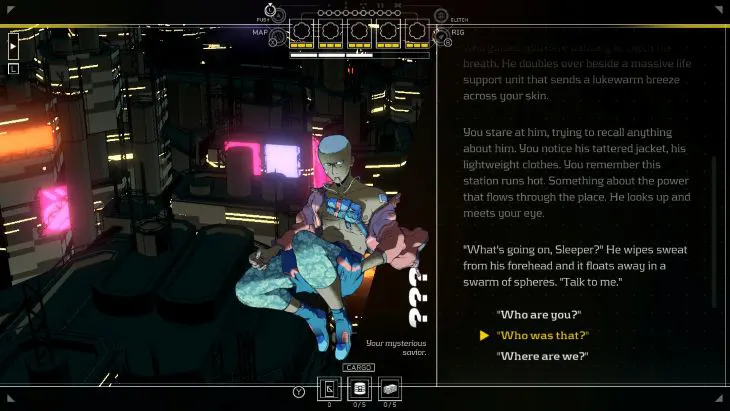
You play as a sleeper who has attempted to break away from their contract with the corporation known as Essen-Arp. Sleepers are those who have their minds copied and implanted into an artificial body and then put to work until their debt is paid off. Your friend Serafin attempted to reboot you so make it so that Essen-Arp can’t find you and cut your dependence on Stabilizer, the drug needed to keep your body and mind from deteriorating. However, in the middle of the reboot, a man known as Laine interrupts the process, causing you to lose your memory. Things eventually work out though, with Serafin and yourself escaping for the time being. Landing in Hexport, it is then up to the two of you to get as far away from Laine as possible.
Much like the first game, Citizen Sleeper 2: Starward Vector starts to shine once things open up and the player has complete freedom to pursue quests that they’re interested in. There are three difficulties and given how all choices are based on stat rolls, the higher difficulties will often lead to more interesting outcomes, with being more likely to happen and the consequences for failure felt more poignantly. But for those worried that the failures will pile up to the point of taking away from the narrative experience, there is an easier difficulty that makes it easier to build yourself back up. So whether you’re looking for a challenging gameplay to make those heavy-hitting narrative moments hit more, or a simple jaunt to reach the next narrative high point, Citizen Sleeper 2 offers an experience for anyone.
Citizen Sleeper 2 is fairly free with its quests, known as drives, in that you can choose to pursue any quests that pique your fantasy. There are two types of quests: major and minor drives. Major drives are the main storyline quests that will progress the story and unlock new areas and gameplay functionality. Of course, there are some major drives that you have to complete to move the story forward. With minor drives, these act more as side quests and won’t affect what ending you get. However, you’re encouraged to complete both types of quests, as they both give upgrade points that can be used to unlock abilities or increase stats.
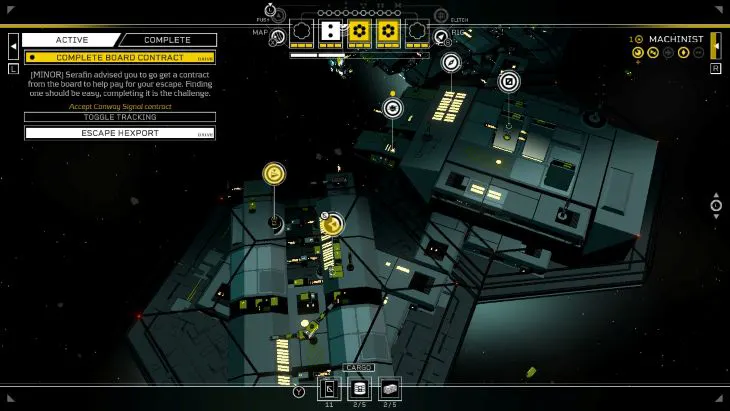
Citizen Sleeper 2: Starward Vector is a dice-based narrative RPG where you will make a variety of choices to progress your story. The story operates on cycles, which can be thought of as days. Each day, you get a maximum of five dice that you can use to make actions. Dice can have a value of one to six, with high numbers giving a higher chance for a positive outcome during skill checks. There are three different classes that all have one stat that they are missing and one stat that they excel at. No one class is inherently better than the other, as all five stats (Engineer, Interface, Endure, Intuit, and Engage) show up in varying degrees. There will be instances in the game where your chosen class will shine and others where it feels like the whole universe is operating against you.
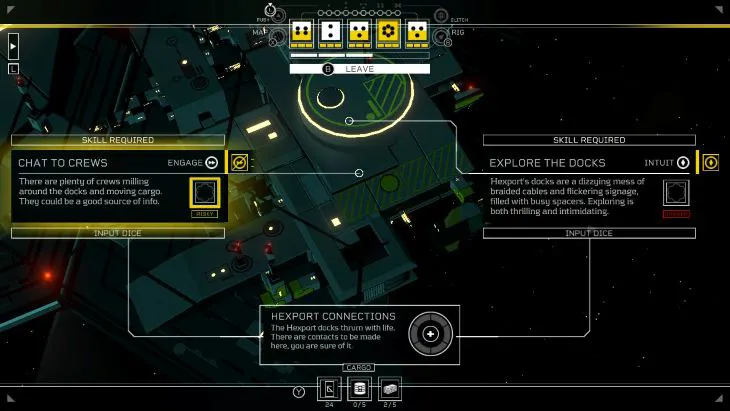
Along with exploring different stations, you can also go on contract jobs. During these jobs, you’ll need supplies to maintain your hunger meter and fuel to travel to the location. There are a variety of jobs that you can perform, whether it’s locating and extracting data cores, or mining ice to test whether an asteroid is a viable source of water. Contracts can range from risky to dangerous and the more dangerous a job, the more likely that it can fail, due to running out of supplies and increasing stress. However, even if you do end up failing, the game does allow players to build themselves back up, although the difficulty level will affect how quickly (and easily) that will happen.
With the turnover to a new cycle, your dice will be rerolled and you have the option to use them however you want. If you choose not to perform any action and end the cycle to generate a new set of dice, you can do so. The higher the value of a dice, the more likely that any actions that you take will result in a positive outcome. Three outcomes can occur: positive, neutral, and negative. A negative skill check doesn’t automatically mean that all is lost, but depending on where you get a negative outcome, it can result in a worse outcome down the road. It can mean anything from losing an energy bar from your hunger gauge or increasing the cycle count of a negative counter that you don’t want to fill up.
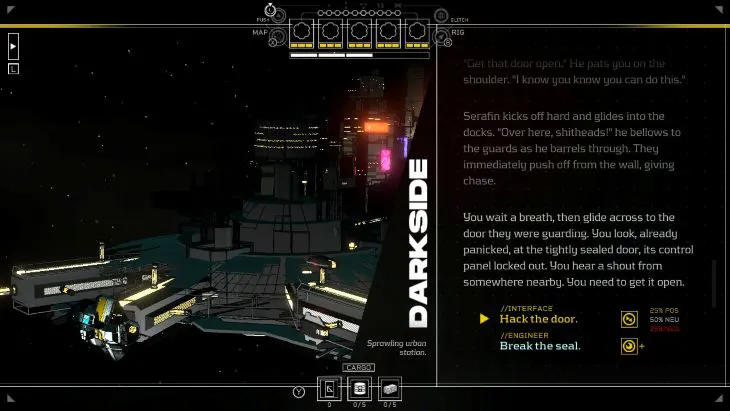
Your stats affect the actual percentages of your success or failure. If a stat is missing, you’ll never be able to have a 100% positive outcome (rather, you’ll see a split of 25% positive, 50% neutral, 25% negative). Because of that, you do have the option to look around at different locations on a station, as different actions lean towards different stats. Fixing parts of a station may lean more towards an Engineer while helping out in a restaurant may lean more towards Intuit. After using your dice on an action, you’ll see the outcome in real-time and can move on from there to your next action. Once all of your dice have been used up, you’ll have to return to your Rig to end the cycle and begin anew.
It’s very easy to fall into the habit of pushing your luck with dice rolls, especially if you are on a station, where consequences aren’t felt as heavily for the player. You may lose a portion of your hunger gauge, but you can always regenerate it by purchasing meals. Your stress meter may go up, but you can always rest on your Rig to lower the meter. There are some cases where this isn’t the case, but a lot of the time, negative outcomes aren’t felt too badly outside of contracts.
The Rig acts as your base of operations. You can lower stress that comes about in contracts or by completing actions while starving by resting, using one of your supplies to fill your hunger meter and other actions that unlock as you progress the story. Parts of the Rig will open up to more actions depending on what drives you decide to pursue.
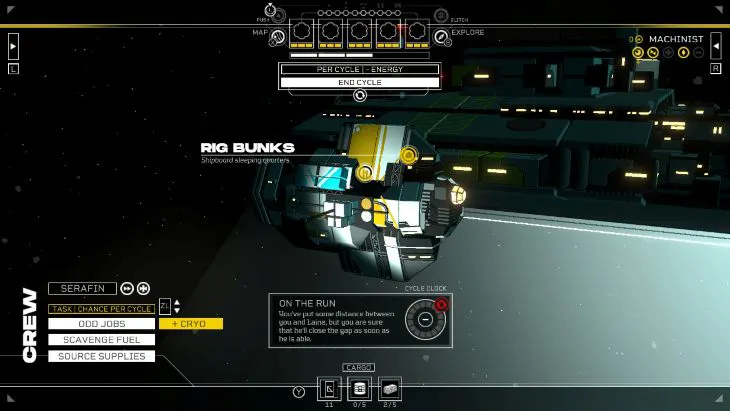
Cycles act like day cycles and are often used as a time-tracking and counting metric within the game. While you’ve escaped Laine’s grasp at the beginning of the game, he is still able to track you and there is a constant tracker that slowly fills up with the passing of each cycle. Other negative trackers (such as a tracker telling to you to fix a broken system in a set amount of time) are highlighted in red. Positive or neutral timers (usually tasks that require you to wait a few cycles until you can progress a storyline) are highlighted in yellow. These trackers are based on time and only progress when a cycle has passed. Trackers can also accumulate based on your skill checks. Positive skill check outcomes will increase a tracker, which you’ll often see when you are exploring a new part of a station you’ve just landed on. On the flip side, negative skill checks will increase with negative outcomes.
Contracts are jobs that your crew can take and require fuel to navigate to their coordinates, and supplies to keep your hunger gauge from falling into the starving status. Small contracts (usually with minimal risk) will require a down payment to receive the coordinates for the job. Otherwise, side characters will come to you and offer your contracts to complete. These contracts tend to be more dangerous in nature, so you’ll want to prepare as much as possible for the contract (as well as any potential fallout). Once you’ve started a contract, you are not able to leave until you’ve either succeeded or failed.

On contracts, the game operates much the same, in that you’re at a location and must perform actions that will lead to your potential success. While on a contract, you can bring along other members of your crew to lend their stats. It’s always a good idea to bring along at least one crew member who can cover for your missing stat. From there, you’ll perform actions and succeed or fail with skill checks. Failure with skill checks results in increased stress and on some contracts, an increase to any negative timer that can result in a premature end to your contract.
As stress increases on a contract, your dice are more likely to lose one of their health points. Each dice has three health points and once all three are deducted, your dice breaks. On easy difficulty, a broken dice will always have a value of one until it’s repaired. Otherwise, the dice are taken out of commission. If all of your dice break, it’ll end with the contract failing and you return to the station where you were previously based. While out on a contract, there is no way to lower your stress, so stress management is key to success.

If you’re finding that your dice rolls are all too low for your liking, you can use your push ability. Push, by default, will increase your stress meter to give two points of dice value to your lowest dice. Early on, low levels of stress aren’t likely to affect your dice health. On the other hand, if you have a high level of stress, another level of stress doesn’t matter in the scheme of things, especially if you need one more high dice roll to progress the clock. Taking risks is a major part of contract work, but being smart with your risks is just as important.
As you complete major and minor drives, you’ll gain upgrade points. Upgrade points can be used for one of two things. You can use four points to permanently increase one of your stats, or you can use two upgrade points to unlock push abilities. Push abilities affect how much stress you accumulate (or lose) when using the ability, as well as how much additional value your dice gain.
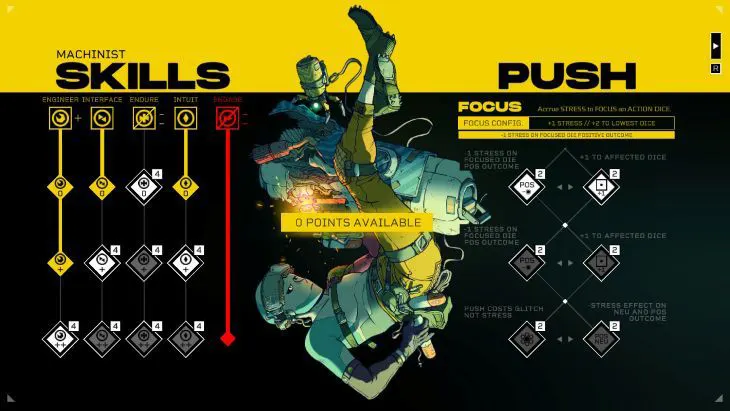
With your dice, once all of its health points have been depleted, it either has a permanent value of one or is unusable until it is repaired. Dice can be repaired using components, which can be found or bought at different stations. However, it does take some time for this functionality to open up on your Rig. But once it does, so long as you have the components on hand, you can repair your dice one at a time. On difficulties other than easy, fixing your dice will result in a glitch. What this all means is that for all dice rolls, you have a 20% positive and 80% negative chance. With those odds, it does feel like there’s not much use in having the dice in the first place. But a glitched dice is better than having one less dice in some cases, as you’ll need all the actions you can get.
As Citizen Sleeper 2: Starward Vector is a narrative RPG, a good portion of the UI of the game is dedicated to the text and displaying your current inventory. The UI is minimal but is very effective at displaying everything that you need to know without overloading you with information. All characters have one character sprite, which will display whenever they are conversing with you. The designs of all of the characters you can meet look cool, with their designs leaning either towards manual work attire or outfits suited for exploration. In the background, you’ll see 3D renders of the station that you’re currently based on, which you’ll see in all its glory as you’re moving around.
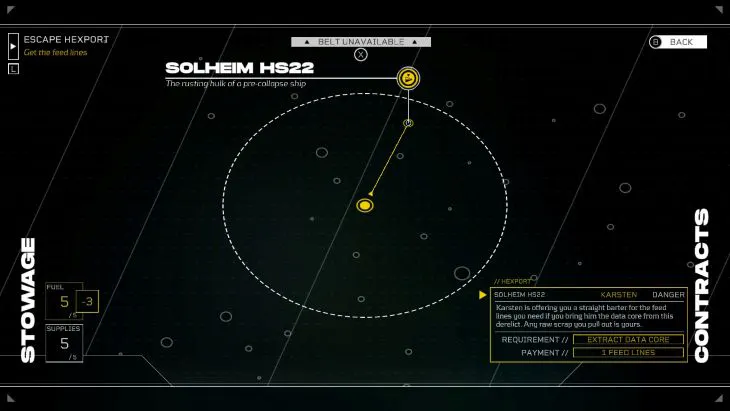
As for the music, the games lean much more into using sounds for the background noise as opposed to music. The white noise of space travel, people milling in marketplaces, and your spaceship traveling through the expanse of space transport you right into the suffocating vacuum that is the Belt. But occasionally, you’ll hear a hint of music. The music itself isn’t very memorable, but in a way that is close to life. We all hear music in our day-to-day lives but often don’t make a note of it in mind. It’s akin to putting on a lofi beats playlist while you’re working. Lots of synth that leaves you feeling as though you’re floating.
Citizen Sleeper 2: Starward Vector sets itself apart from its predecessor by adding new mechanics while also not navigating too far from its roots. While there are moments to relax, the game does a great job at keeping the tension with the constant timer showing Laine’s proximity to you, as well as the inclusion of contracts. Much like its predecessor, the world-building and character connections are just as interesting. The management of dice health and inventory as you’re exploring the Belt keeps you on your toes, but also keeps the game interesting by not having things be too predictable. The writing, of course, is the meat and bones of the game, and the constant tension keeps things interesting so that there isn’t too much of a lull between fulfilling drives for other characters. As a sendoff, it’s a great title for fans of the first game, as well as newcomers who enjoy narrative RPGs.
Citizen Sleeper 2: Starward Vector gets an 8/10.